Emoji Draw
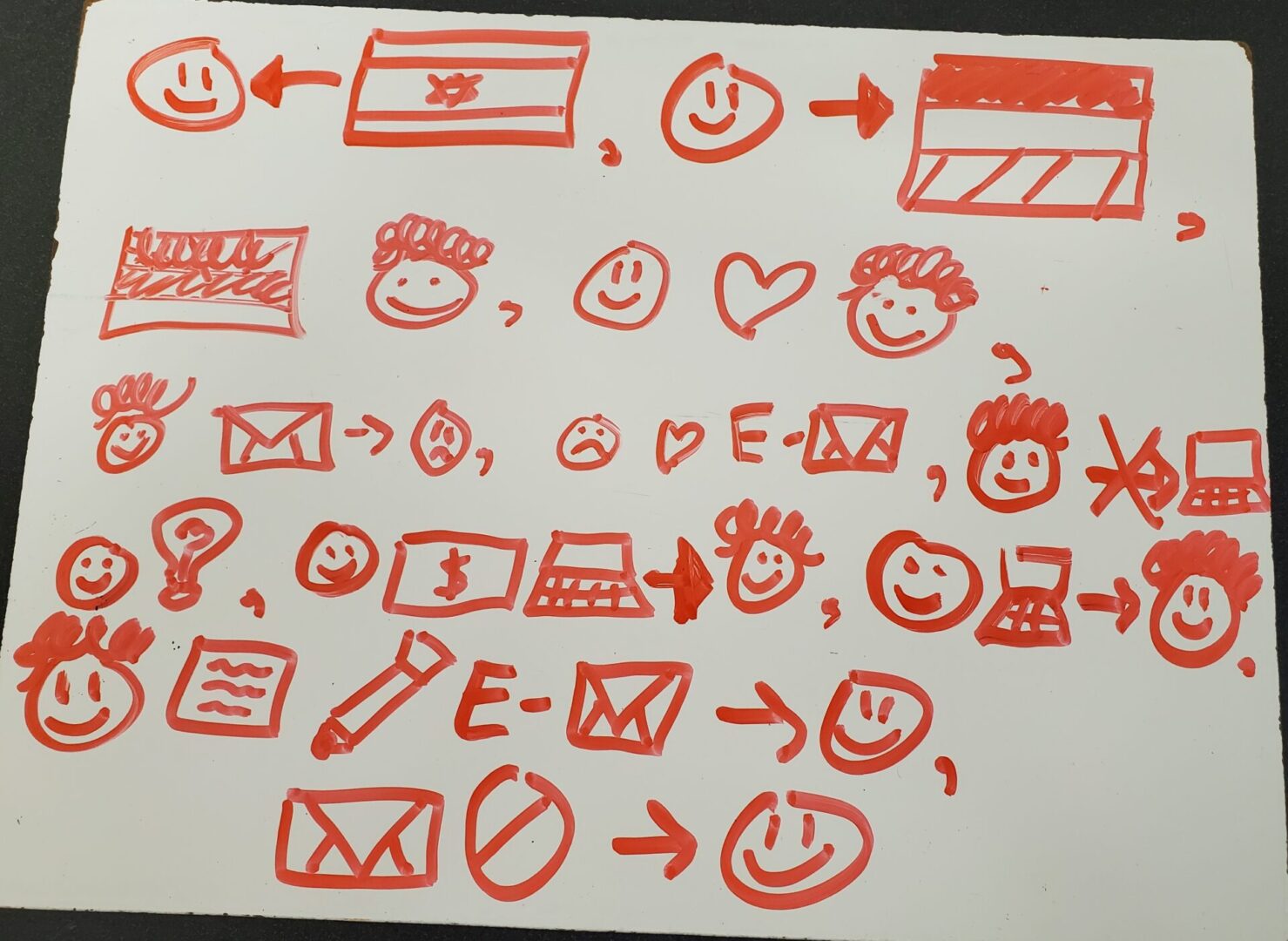
Emoji Draw
Note: Please read the following blog posts before this one:
This activity is a simple variation to “Keywords (and Pictures) & Read, Draw, and Discuss / Listen, Draw, and Discuss” . However, instead of using drawings during the activity, students use emojis.
I know that this seems like a rather minute (and even perhaps inconsequential) variation to the above-mentioned activity, but I promise that this small tweak is anything but insignificant. It truly adds a different feel to the activity and helps keep it feeling new for students.
The basic set up of this follows the same sequence / instructions as the other activity, which is listed above at the beginning of the post.
Something to Consider: This activity or the other mentioned activities can also be done in a more independent manner. Instead of reading aloud to the students or having them listen to a story, simply give them a text/story and have them read it on their own. You can them have them draw emojis on their boards on their own as they read the story. (You can easily check their level of comprehension by having them show you their boards when they are finished.)
In Class:
1. Students had a whiteboard, marker, and rag/eraser.
2. We established meaning of our target structures and vocabulary.
- You can use any means you feel are appropriate and effective for establishing meaning, for example: TPR, PQAs, etc.
3. I explained that they would have to draw emojis to retell the story.
4. Then, we proceeded with either a reading/text or listening component.
- In this case, we read and discussed the text. (Below I outline the story that we worked with.)
- Note: You can also refer to the linked post above for more appropriate steps on how you can proceed.
5. After students were comfortable with the text, I projected the text and I had students retell the story through drawing only emojis. (When they were finished, I had them hold up their boards. I looked at their emojis as a comprehension check.)
- Note: You can define the time and any parameters as you wish. For example: You can tell the class they have 4 minutes to draw and they can use as many emojis as is necessary to retell the story.
6. (OPTION) Then, I told the class to show another person their whiteboard with their emojis and orally retell the story (in the target language).
- Note: I asked them to point to the emojis as they retold the story.
7. (OPTION) Then, we repeated step 6 a couple of times with different partners. (The students enjoyed sharing their work and seeing the work of others.)
Note: I offered any students the chance to come up in front of the class and retell the story using the keywords on their board. (I don’t force students to do this!)
Tip: You can also draw emojis on a whiteboard as the students do it. The students enjoy seeing your emojis also. Plus, you can then hold your board up and retell the story using your emojis.
Bonus: Check out: https://emojitranslate.com/
- This is a fun website, where you can enter text (in the target language) and have it translated (partially) into emojis. And vice versa. You can also input emojis and have the emojis translated into the target language.
Reflections:
As with the other activities, my students enjoy this one and I also feel that students get a lot out of doing this activity. Yes, they enjoy the drawing part of it, but you’ll notice that as they draw they are truly focused and you can almost see them “processing” the story as they draw. That is, it seems they are “processing” or thinking about how to retell the stories differently (more deeply?) than when they are allowed to draw a their own specific picture to illustrate the story. (This is not backed by any formal research, it is only derived from my observations.)
Below are pictures from my students with their emojis.
- Note: In this case I used a story from the Voces Digital German curriculum – “Briefe und Emails – Letters and Emails”.
Benjamin lives in Luxembourg. His grandma lives in Saarbrücken, Germany. His grandma (hand) writes him letters and he always writes her back. However, he doesn’t want to (hand) write letters; he would rather send his grandma emails – but his grandma doesn’t have a computer. So, Benjamin decides to buy his grandma a laptop. He goes to the computer store and buys her one. He then drives to his grandma’s house and shows her how to send emails using the laptop. She sends her first email and is happy. Benjamin is also happy, because he can now write his grandma emails and no longer has to (hand) write letters.
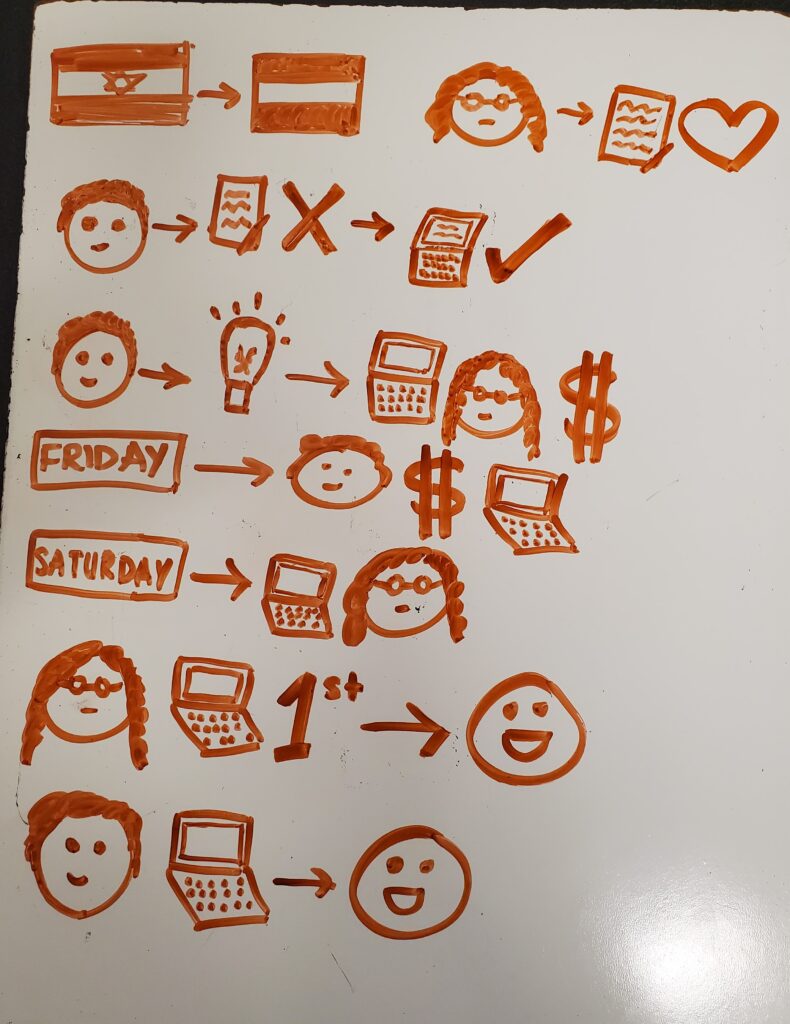
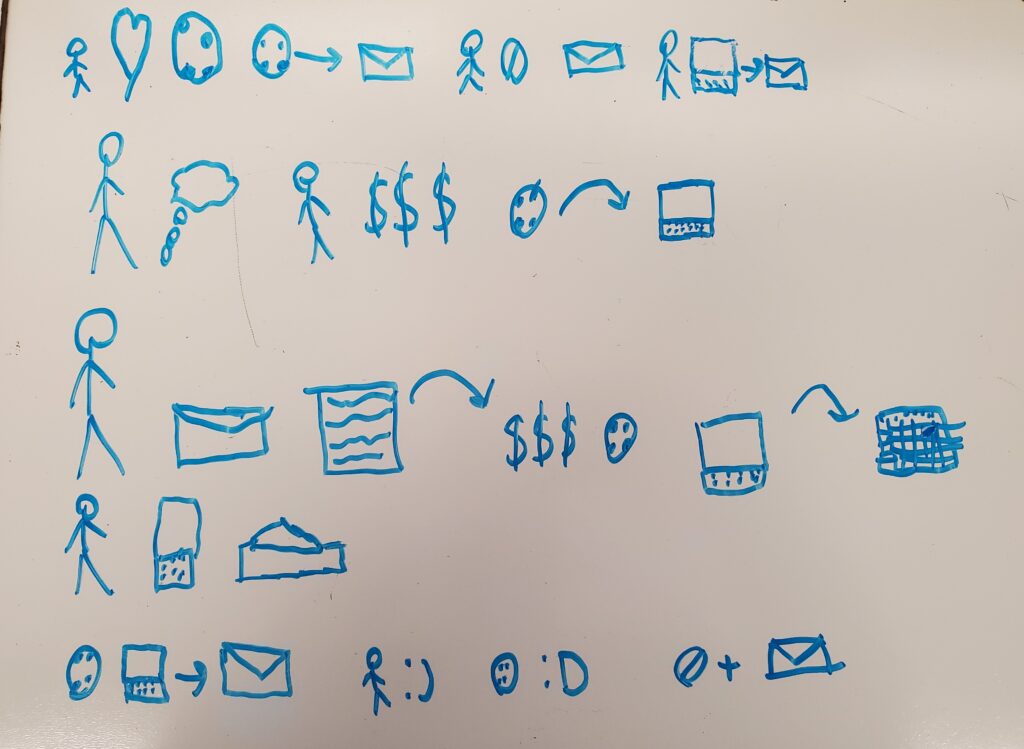
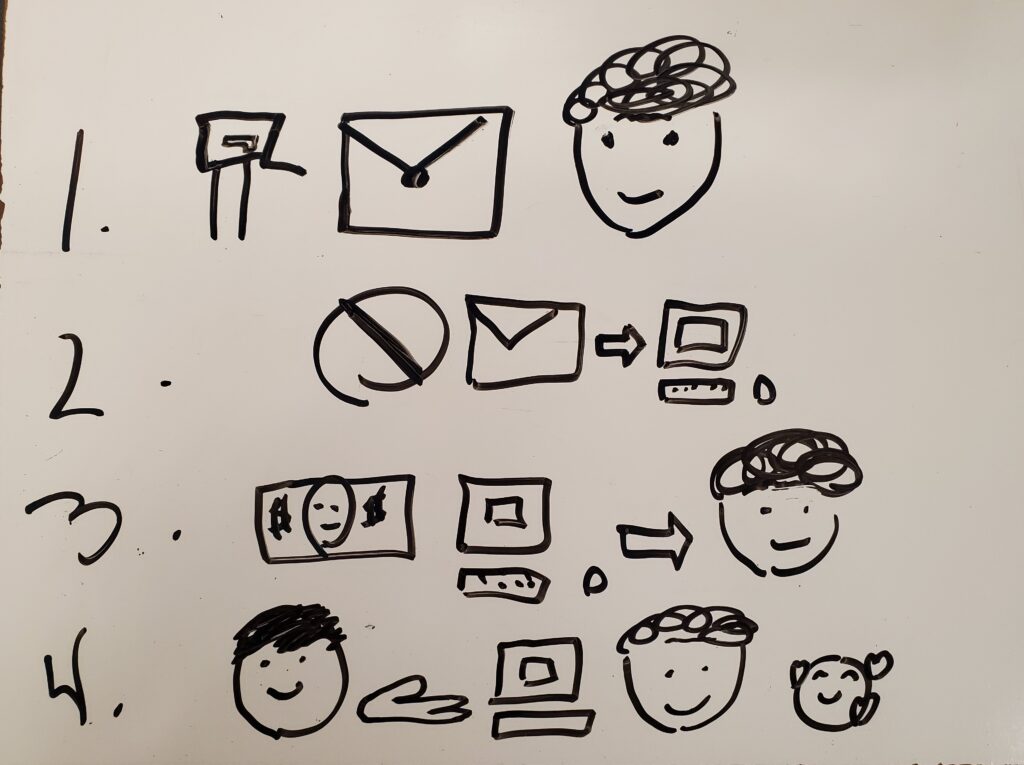
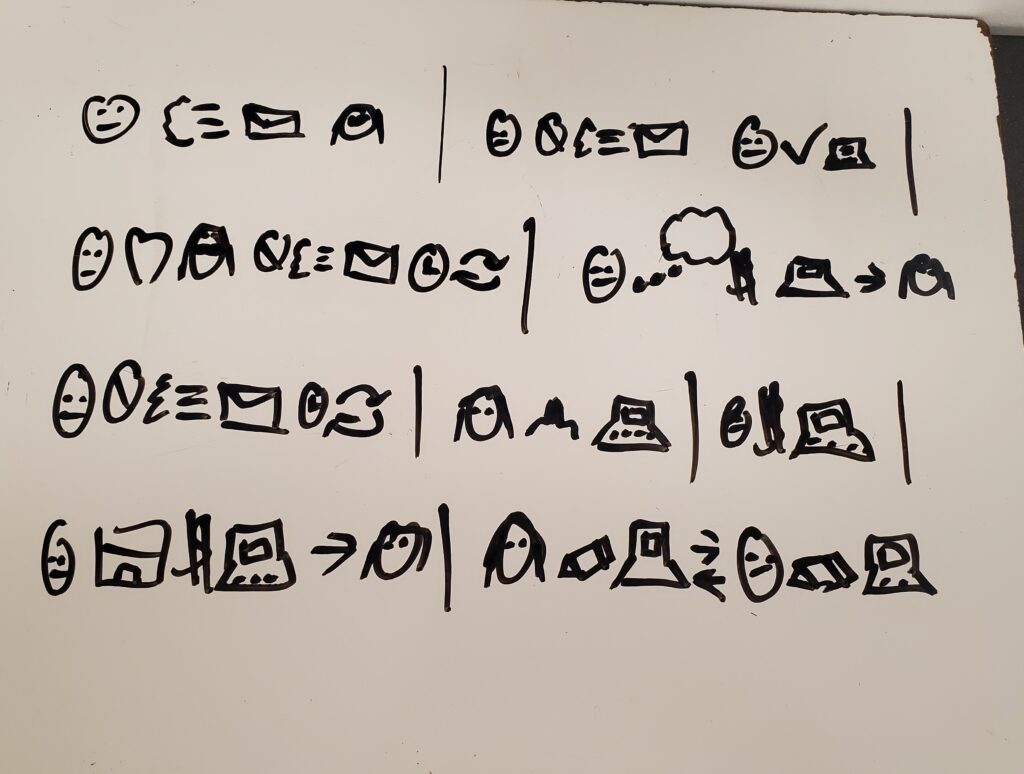
This is a really good activity! I sometimes will write out sentences from a reading using emojis and have students then find the sentence and copy it down, but I like how you are having students create the emojis themselves and then use those emojis to do multiple partner retells – a great way to apply what they are doing. Students are receiving understandable input through hearing the story and then writing it down using emojis (which is causing the brain to create mental connections of these images to the vocabulary). Then through the partner retells, while person #1 is outputting, person #2 is receiving more input of those messages and in turn will retell it back to person #1 who receives that understandable input.
I also like how you laid out a lesson plan for it by showing how you scaffolded a lesson to get students to this point, i.e., that the pre-stuff is very important, instead of just jumping into it.
Find the Sentence using Emojis – https://todallycomprehensiblelatin.blogspot.com/2018/05/find-sentence-using-emojis.html
This is great Keith! Thanks for sharing!